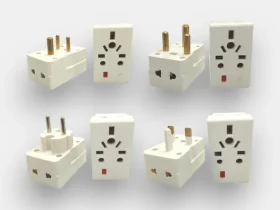Accessory Dwelling Units (ADUs) are becoming increasingly popular in urban landscapes across the United States, and Miami is no exception. Commonly referred to as granny flats, in-law suites, or backyard cottages, ADUs are independent residential units located on the same lot as a stand-alone (single-family) house. In Miami, these structures can vary widely in form, including detached units in the backyard, converted garages, or basement apartments.
ADUs in Miami
The city of Miami recognizes ADUs as a vital part of its housing strategy, particularly as it grapples with issues of housing affordability and density. ADUs contribute to a more diverse housing stock, offering affordable housing options without altering the character of established neighborhoods. They are also seen as a way to address the needs of multigenerational families and provide homeowners with an additional income stream through rental opportunities.
As Miami continues to grow and evolve, the development of ADUs is supported by specific regulations tailored to encourage their construction while maintaining community integrity. This introduction sets the stage for a deeper dive into Miami’s specific zoning laws, the benefits of ADUs, and the practical considerations involved in their development.Statement lighting, such as chandeliers or sculptural pieces, can also be used to add personality to the kitchen.
Natural Light: Where possible, contemporary kitchen designs maximize natural light. Large windows, skylights, and sliding or bi-fold doors not only make the space look bigger and brighter but also help reduce reliance on artificial lighting during the day.
Understanding Miami’s Zoning Laws for ADUs
Navigating the zoning laws related to Accessory Dwelling Units (ADUs) is crucial for any developer or homeowner in Miami looking to expand their property’s potential. Miami’s zoning regulations are designed to ensure that new ADU developments harmonize with existing community standards and infrastructure capabilities.
As per Blue Builder Miami, “zoning requirements for ADUs vary depending on the specific area and the type of property. Generally, these regulations address factors such as lot size, building setbacks, maximum unit size, and parking requirements. For example, the city typically requires that the lot must be of a certain size before an ADU can be legally added. Additionally, there are height restrictions and a percentage of the lot that an ADU can occupy, which helps maintain the aesthetic and character of neighborhoods.”
One notable aspect of Miami’s approach to ADUs is its flexibility in certain zones. In areas facing severe housing shortages, the city has been more lenient in allowing ADUs, as part of a broader strategy to increase affordable housing stock. However, in more suburban or low-density areas, restrictions can be stricter to preserve the character and low-density nature of these neighborhoods.
For potential developers and homeowners, understanding these local nuances is essential. The city also offers resources and guides to help navigate the permitting process, which can be intricate and varies significantly by locality. These resources are designed to streamline the process and encourage compliance with all regulatory requirements, ensuring that ADUs contribute positively to the city’s housing goals.
Benefits of Building ADUs in Miami
The construction of Accessory Dwelling Units (ADUs) offers a multitude of benefits for homeowners, tenants, and the broader Miami community. These benefits align well with broader urban planning goals, such as increasing housing supply, diversifying the types of available housing, and supporting sustainable urban growth.
1. Increased Housing Affordability: ADUs provide a cost-effective housing option for renters, given that they are often smaller in size and cheaper to rent than main residences. This can be particularly appealing in a city like Miami, where housing affordability is a pressing issue. For homeowners, ADUs offer an opportunity to generate additional income through rent, which can help cover mortgage payments or property maintenance costs.
2. Flexible Housing Solutions: ADUs serve a variety of housing needs. They can be used to house aging parents close to family while maintaining privacy and independence, provide living quarters for adult children as they transition into the workforce, or accommodate guests. This flexibility is a significant advantage as family dynamics and housing needs evolve.
3. Minimal Impact on Neighborhood Character: Unlike large-scale developments, ADUs typically do not alter the skyline or lead to significant increases in neighborhood density. They fit within the existing framework of a property, maintaining the aesthetic and character of neighborhoods, which is often a concern among residents when new construction is proposed.
4. Sustainability and Reduced Urban Sprawl: Building ADUs promotes higher density within urban cores, which can help reduce sprawl and its associated environmental impacts. By optimizing the use of existing land and infrastructure, ADUs can contribute to more sustainable urban growth patterns. Moreover, their smaller size often results in a smaller carbon footprint compared to larger homes.
5. Support for Multigenerational Living: With the increasing interest in multigenerational households, ADUs provide a practical solution for families looking to keep their loved ones close. This can lead to enhanced family support systems and reduced costs associated with elderly care or childcare.
These benefits demonstrate how ADUs can serve as a strategic solution to several urban challenges facing Miami. By integrating these units into city planning, Miami can address housing shortages, affordability, and sustainability simultaneously.
Challenges and Considerations in ADU Development
While the benefits of Accessory Dwelling Units (ADUs) are significant, prospective builders in Miami also face various challenges and considerations that must be addressed to ensure successful development. Understanding these potential hurdles is essential for anyone considering adding an ADU to their property.
1. Regulatory and Zoning Restrictions: As previously discussed, Miami’s zoning laws can be complex and vary significantly by area. Navigating these regulations often requires careful planning and consultation with zoning experts or city officials. This can include restrictions on size, location, and the type of ADU permissible, which may limit what can be built on certain properties.
2. Financial Costs: The upfront cost of constructing an ADU can be substantial. This includes not only the costs of materials and labor but also potentially significant fees for permits and utilities setup. Homeowners need to ensure that they have adequate financing in place, which might involve loans or other financing options. The return on investment largely depends on rental income prospects, which can vary based on the local real estate market.
3. Neighborhood Opposition: In some cases, proposed ADU projects might face opposition from neighbors or community groups who are concerned about increased density, parking issues, and changes in neighborhood character. Such opposition can lead to delays, additional restrictions, or even project cancellation. Engaging with the community early in the planning process can help mitigate these issues.
4. Design and Construction Challenges: Designing an ADU that is both functional and compliant with all regulations can be a challenging task, especially on smaller or irregularly shaped lots. Additionally, the construction process itself can disrupt the daily life of homeowners and their neighbors, requiring careful management and communication.
5. Utility and Infrastructure Strain: Additional dwellings on a single property can put a strain on existing utility services and infrastructure. This might include increased demand for water, electricity, and sewer services. In some cases, upgrades to these systems may be required, adding to the project cost and complexity.
6. Rental Management: For homeowners who plan to rent out their ADU, there are the added responsibilities of being a landlord, which includes maintaining the property, managing tenant relationships, and ensuring compliance with rental regulations.
Navigating the Permit Process for ADUs
Obtaining the necessary permits for building an Accessory Dwelling Unit (ADU) in Miami can be a complex process that involves multiple steps and adherence to specific regulations. Understanding this process is crucial for homeowners and developers to ensure their project proceeds without legal or regulatory setbacks.
1. Preliminary Research: Before initiating any construction, it is essential to conduct thorough research into the specific zoning requirements of your locality. This includes understanding permissible sizes, heights, and placement of ADUs on a property. Miami’s official city or county websites and planning departments are valuable resources for this information.
2. Professional Consultation: It is advisable to consult with architects, builders, and legal experts who specialize in ADU projects. These professionals can provide insights into the feasibility of your project and help design a unit that complies with all local codes and regulations.
3. Preparing Your Application: Once your ADU plans are drafted, the next step involves preparing and submitting a detailed application to the local planning department. This application typically includes site plans, construction blueprints, and other documentation that outlines the specifics of the project. It’s important to ensure all documents are complete and accurate to avoid delays in processing.
4. Review Process: After submission, your application will undergo a review process by city planners and other municipal departments. They will assess your project’s compliance with zoning laws, building codes, and other relevant regulations. This stage may involve several revisions and resubmissions to address any concerns or requirements the city might have.
5. Obtaining Permits: If your project meets all criteria and passes the review process, you will be granted the necessary permits to begin construction. These permits must be prominently displayed at the construction site and are subject to inspection by city officials.
6. Inspections and Final Approval: Throughout the construction phase, your project will be subject to inspections by city officials to ensure it adheres to the approved plans and building codes. Once construction is completed, a final inspection will be conducted. If the ADU passes this inspection, you will receive a certificate of occupancy, which officially allows the unit to be inhabited.
Navigating the permit process efficiently requires attention to detail, patience, and often, the ability to adapt to feedback from city officials. Successfully managing this process can significantly reduce the risk of costly delays and legal issues.






Leave a Reply